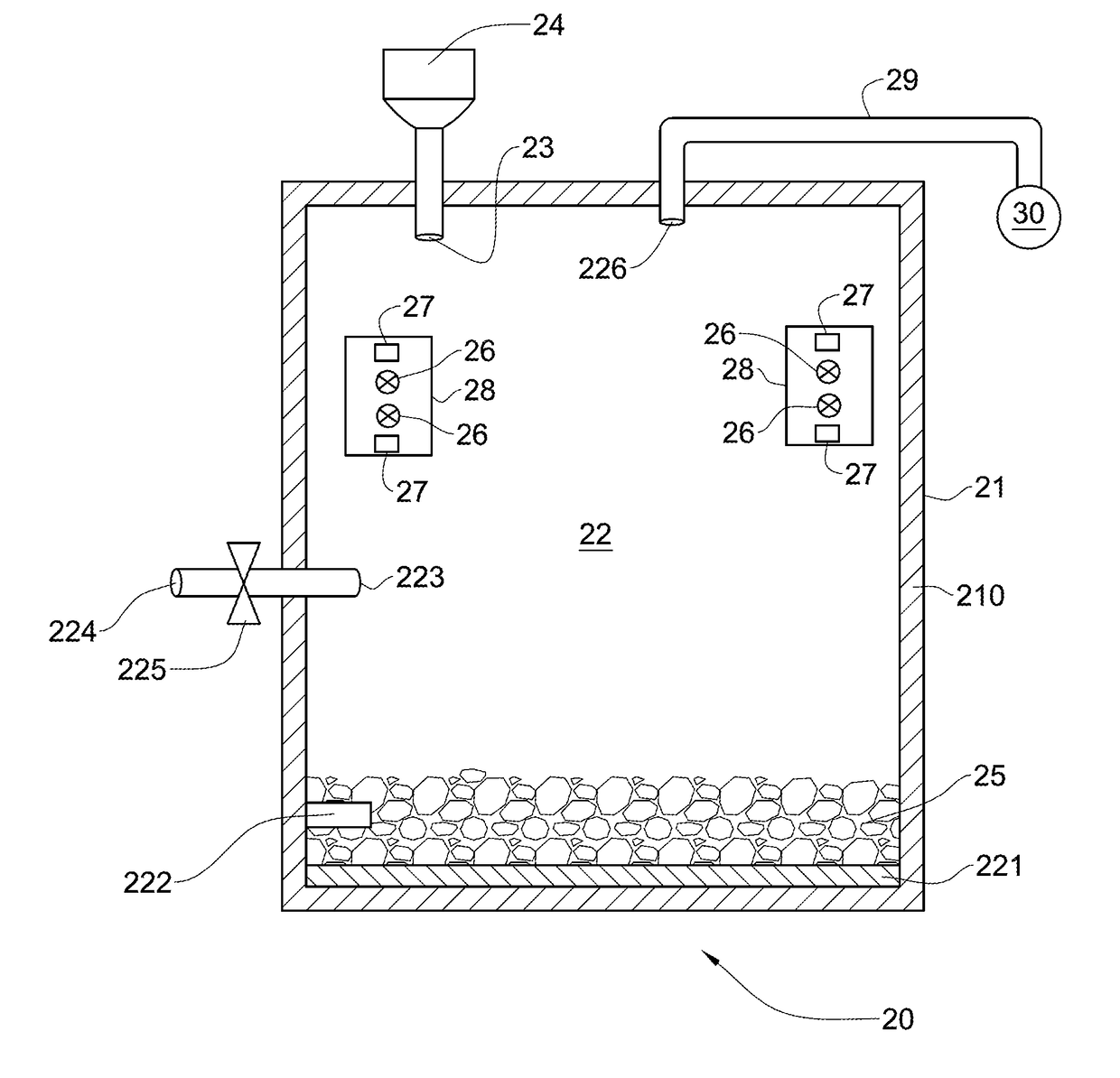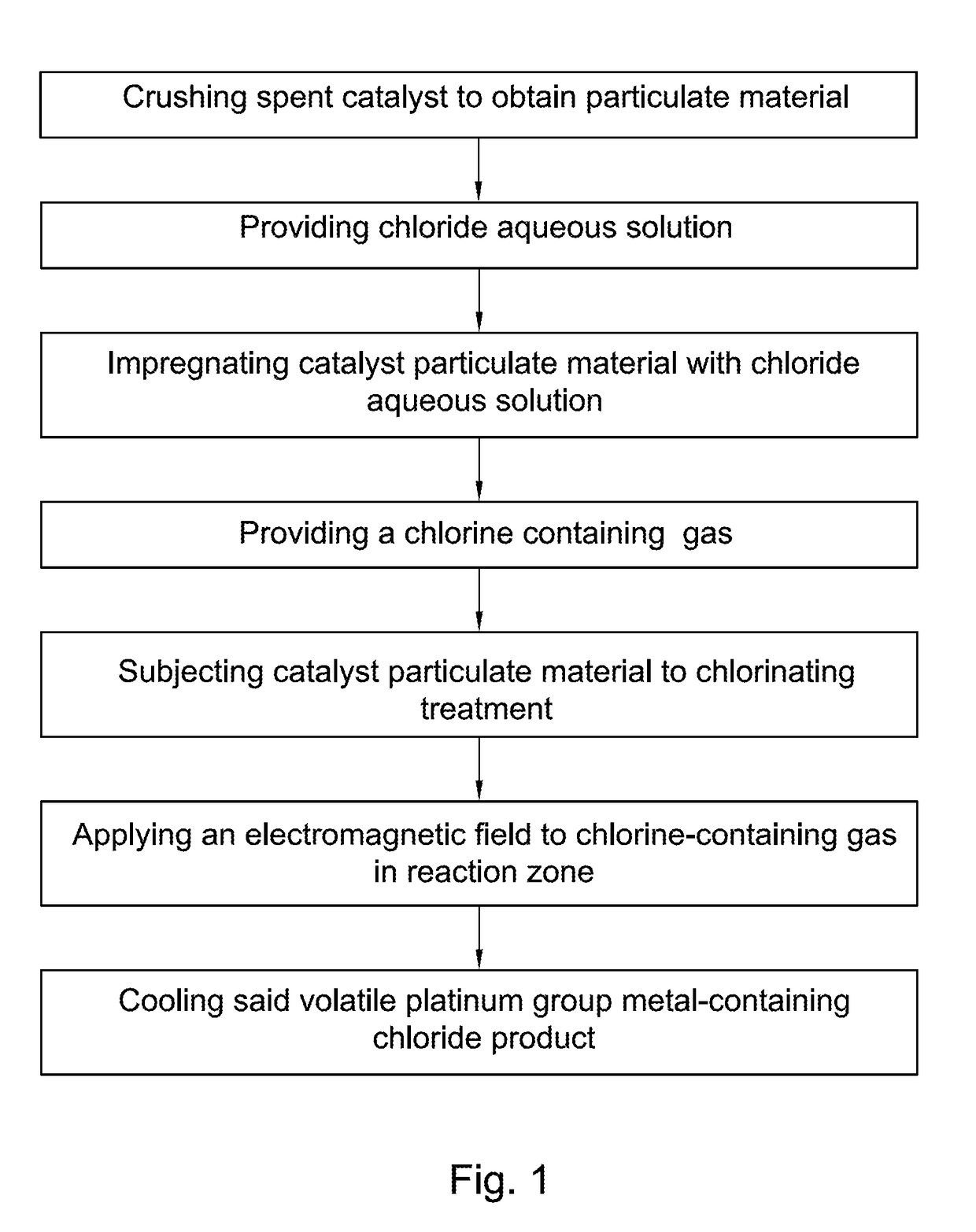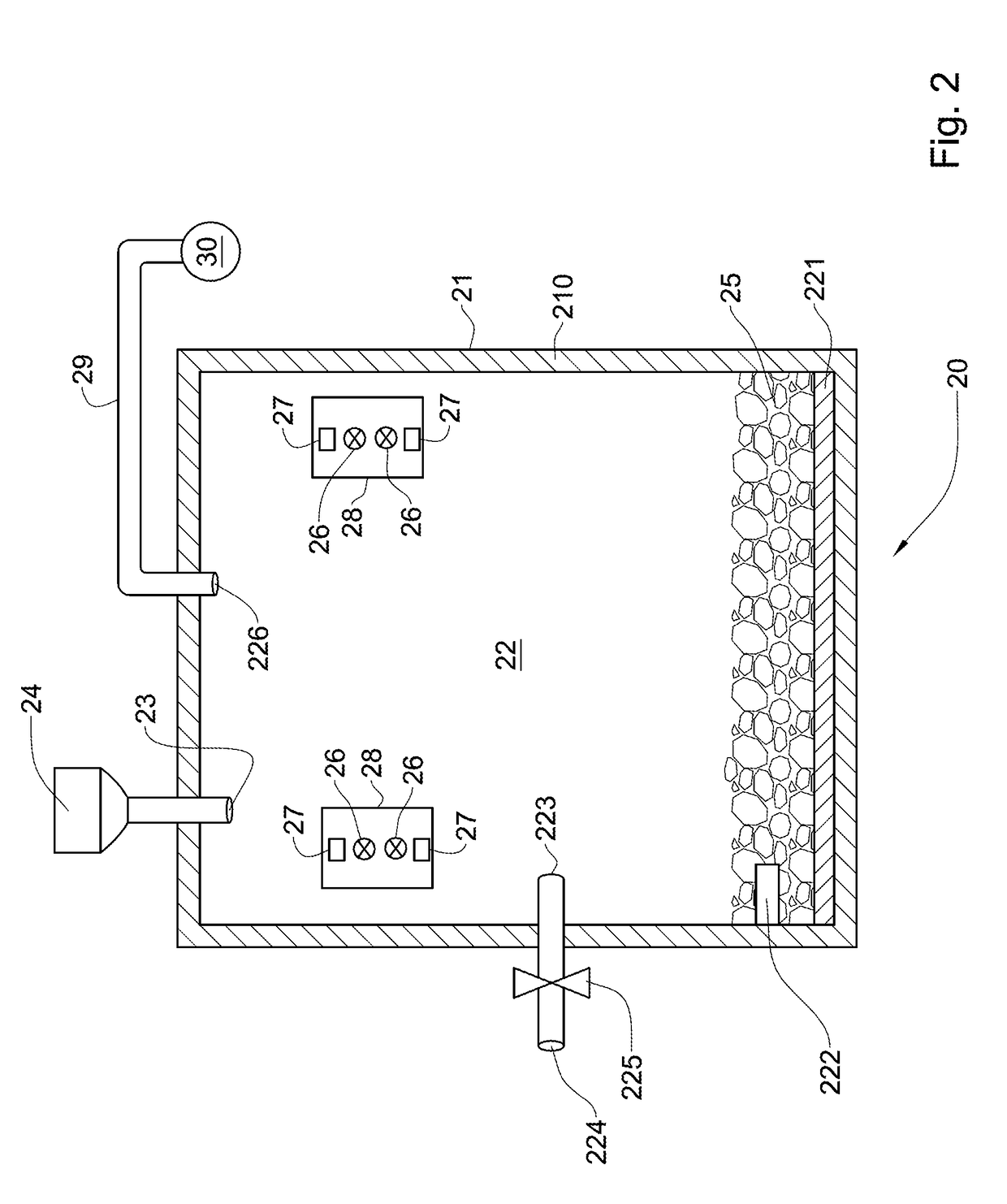Method for platinum group metals recovery from spent catalysts
a platinum group metal and catalyst technology, applied in the field of metalurgical techniques, can solve the problems of large amount of waste acidic or alkaline solutions, hydrometallurgical processes, etc., and achieve the effect of improving the contribution to the ar
- Summary
- Abstract
- Description
- Claims
- Application Information
AI Technical Summary
Benefits of technology
Problems solved by technology
Method used
Image
Examples
example 1
[0118]289 grams of spent catalyst containing 0.45 weight percent of platinum was crushed to obtain a catalyst particulate material. Then the catalyst particulate material was soaked in a chloride aqueous solution containing 27 weight percent of calcium chloride, CaCl2, and 12 weight percent of calcium hypochlorite Ca(ClO)2. Soaking of the catalyst particulate material in the chloride aqueous solution was carried out at atmospheric pressure and room temperature for 10 minutes. The weight of the steeped catalyst particulate material after soaking was 525 grams.
[0119]The steeped catalyst particulate material was then subjected to chlorinating treatment at a temperature of 1000 degrees Celsius for one hour by putting the catalyst particulate material in contact with the chlorine containing gas containing 90 weight percent of chlorine and 10 weight percent of air.
[0120]A static electromagnetic field having a strength of 1.3 Tesla was applied to the chlorine-containing gas for 10 minutes ...
example 2
[0122]30 grams of spent catalyst containing 0.45 weight percent of platinum was crushed to obtain a catalyst particulate material. The catalyst particulate material was then soaked in chloride aqueous solution containing 25 weight percent of ammonium chloride, NH4Cl, and 12 weight percent of calcium hypochlorite Ca(ClO)2. Soaking of the catalyst particulate material in the chloride aqueous solution was carried out at atmospheric pressure and room temperature for 10 minutes. The weight of the steeped catalyst particulate material after soaking was 67 grams.
[0123]The steeped catalyst particulate material was then subjected to chlorinating treatment at a temperature of 1000 degrees Celsius for one hour by putting the catalyst particulate material in contact with the chlorine containing gas containing 90 weight percent of chlorine and 10 weight percent of air.
[0124]A static electromagnetic field having a strength of 1.3 Tesla was applied to the chlorine-containing gas for 10 minutes in ...
example 3
[0126]48 grams of spent catalyst containing 0.45 weight percent of platinum was crushed to obtain a catalyst particulate material. The catalyst particulate material was then soaked in chloride aqueous solution containing 13 weight percent of calcium hypochlorite Ca(ClO)2. The used chloride aqueous solution did not contain any chloride salt. Soaking of the catalyst particulate material in the chloride aqueous solution was carried out at atmospheric pressure and room temperature for 10 minutes. The weight of the steeped catalyst particulate material after soaking was 103 grams.
[0127]The steeped catalyst particulate material was then subjected to chlorinating treatment at a temperature of 1000 degrees Celsius for one hour by putting the catalyst particulate material in contact with the chlorine containing gas containing 90 weight percent of chlorine and 10 weight percent of air.
[0128]A static electromagnetic field having a strength of 1.3 Tesla was applied to the chlorine-containing ga...
PUM
| Property | Measurement | Unit |
|---|---|---|
| grain size | aaaaa | aaaaa |
| temperature | aaaaa | aaaaa |
| time | aaaaa | aaaaa |
Abstract
Description
Claims
Application Information
 Login to View More
Login to View More - R&D
- Intellectual Property
- Life Sciences
- Materials
- Tech Scout
- Unparalleled Data Quality
- Higher Quality Content
- 60% Fewer Hallucinations
Browse by: Latest US Patents, China's latest patents, Technical Efficacy Thesaurus, Application Domain, Technology Topic, Popular Technical Reports.
© 2025 PatSnap. All rights reserved.Legal|Privacy policy|Modern Slavery Act Transparency Statement|Sitemap|About US| Contact US: help@patsnap.com



